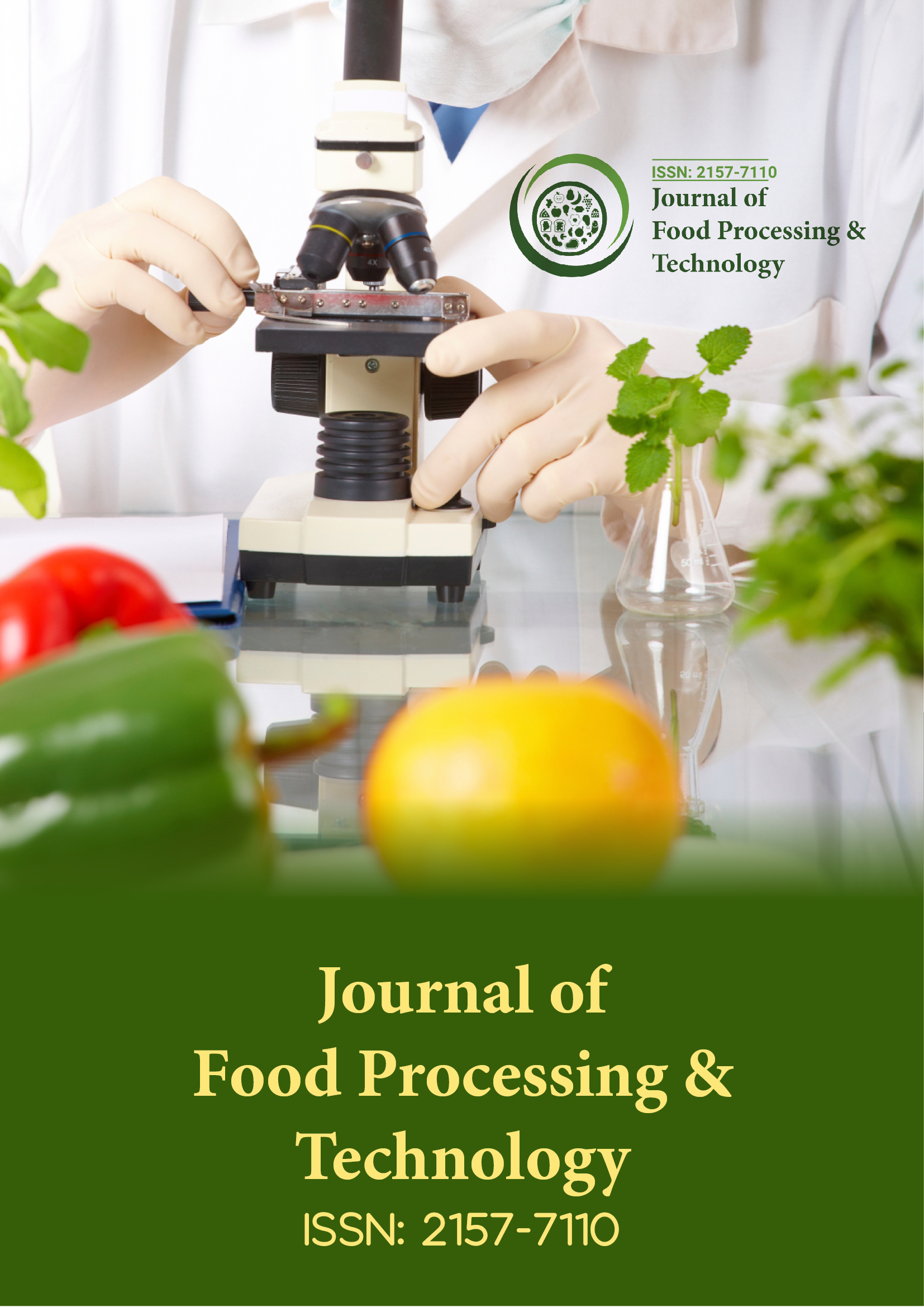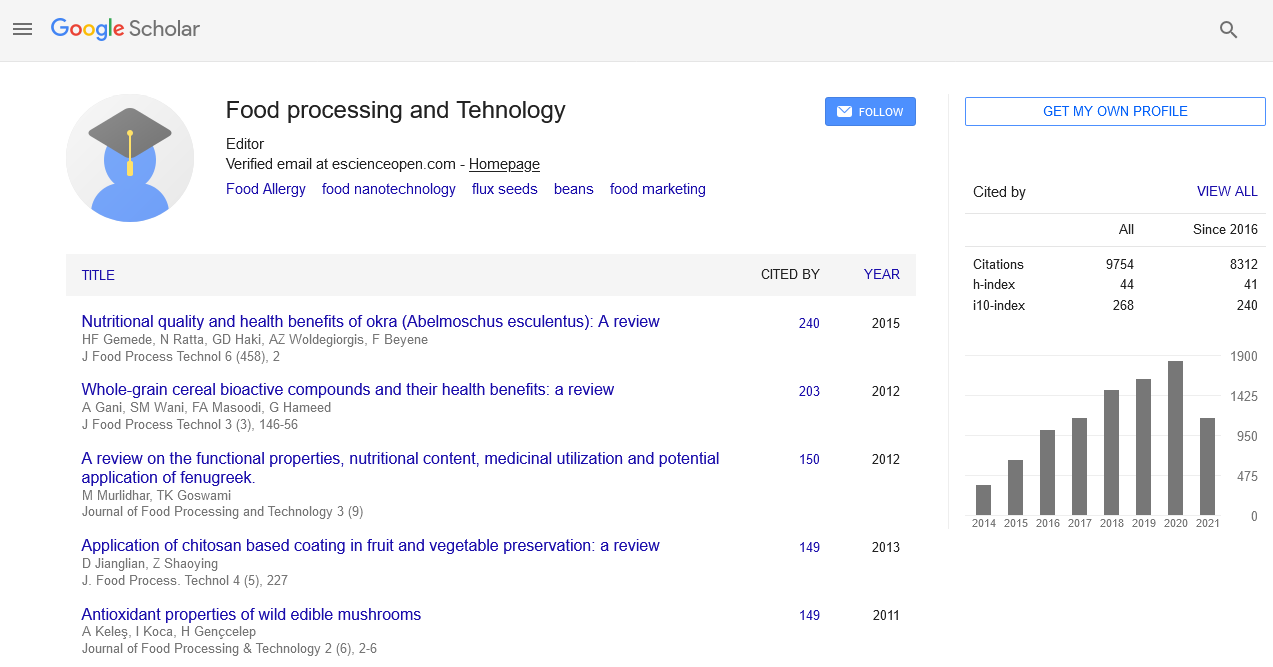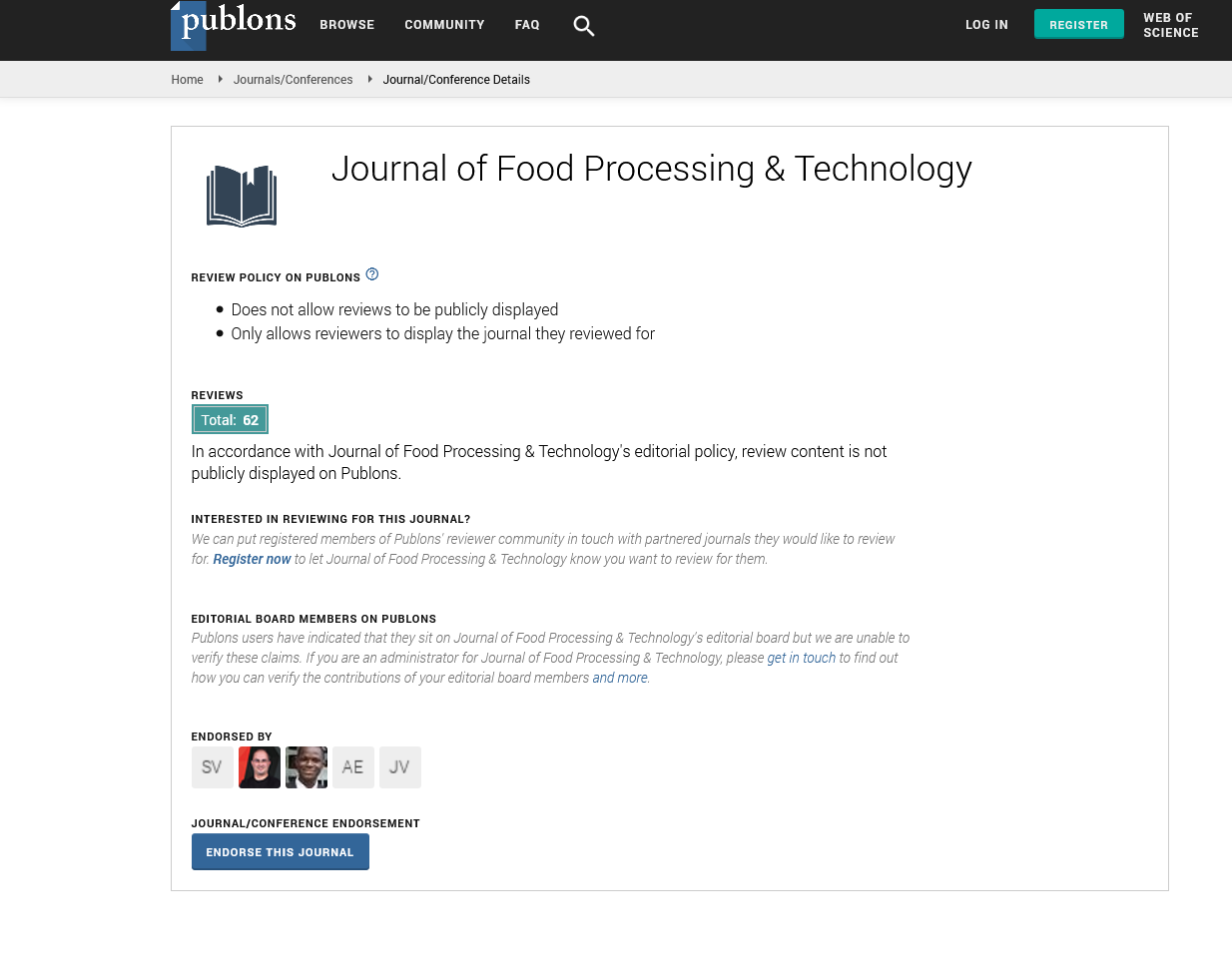Indexed In
- Genamics JournalSeek
- Academic Keys
- JournalTOCs
- China National Knowledge Infrastructure (CNKI)
- Access to Global Online Research in Agriculture (AGORA)
- Centre for Agriculture and Biosciences International (CABI)
- RefSeek
- Directory of Research Journal Indexing (DRJI)
- Hamdard University
- EBSCO A-Z
- OCLC- WorldCat
- Scholarsteer
- SWB online catalog
- Publons
- Euro Pub
- Google Scholar
Useful Links
Share This Page
Journal Flyer

Open Access Journals
- Agri and Aquaculture
- Biochemistry
- Bioinformatics & Systems Biology
- Business & Management
- Chemistry
- Clinical Sciences
- Engineering
- Food & Nutrition
- General Science
- Genetics & Molecular Biology
- Immunology & Microbiology
- Medical Sciences
- Neuroscience & Psychology
- Nursing & Health Care
- Pharmaceutical Sciences
Perspective - (2022) Volume 13, Issue 6
Biological Characteristics of Antioxidants in Citrus Fruit
Meiqi JinChoi*Received: 06-Jun-2022, Manuscript No. JFPT-22-17312; Editor assigned: 09-Jun-2022, Pre QC No. JFPT-22-17312 (PQ); Reviewed: 24-Jun-2022, QC No. JFPT-22-17312; Revised: 01-Jul-2022, Manuscript No. JFPT-22-17312 (R); Published: 08-Jul-2022, DOI: 10.35248/2157-7110.22.13.938
Description
Citrus fruits are extensively farmed around the world and are mostly used to make culinary products with a citrus foundation, such as jams, drinks, and canned fruits. Citrus fruit's nutritional benefit is widely recognized. Numerous studies have demonstrated the health benefits of citrus based dietary items on degenerative conditions such cardiovascular disease, lower blood sugar, cancer, etc. The food businesses that use citrus are growing in light of this information. Citrus peel, a significant waste product in various processing sectors, is produced as a result, which is a citrus based by product. About 50%-60% of the weight of the fruit is made up of citrus peels, seeds, and membrane waste produced by the citrus processing industry.
Therefore, it is vital to investigate the possibility of turning this waste into commercially useful items. Since orange peel includes a variety of active components such dietary fiber, pectin, protein, color, flavonoids, and essential oils, several research have investigated the possible uses of citrus peel in industrial food applications. Additionally, several research have looked at the beneficial bioactive components found in various citrus species peels, as well as efficient extraction methods for obtaining these compounds from the peel. Studies have demonstrated the wide range of uses for these bioactive substances in the food, cosmetic, and pharmaceutical sectors, which target various biological features like antioxidant, antibacterial, anticancer, anti-inflammatory, and anti-diabetic actions.
Citrus fruits include the largest group of polyphenol compounds known as flavonoids which have evolved into an essential bioactive component. These substances control photosynthesis and redox processes and function as precursors for the production of several components, including anthocyanidins. It is widely known that flavonoids have beneficial properties such antioxidant, anti-carcinogenic, and anti-inflammatory actions as well as the capacity to cause lipid antiperoxidative effects. Two main categories of flavonoids present in citrus fruits are polymethoxylated flavones and glycosylated flavones. The primary flavonoids present in citrus species include hesperidin, narirutin, naringin, and eriocitrin. The peel and other solid remnants of lemon waste are the primary sources of hesperidin and eriocitrin. In contrast, the liquid residue is dominated by naringin and eriocitrin.
Citrus peel is used as a flavoring agent in food products
Bergamot oils are rich in linalyl and linalyl acetate, which are well recognized as the essential factors with potential flavor properties. While both ingredients have a lavender flavor, lineally acetate has a pleasant, fruity, pear like flavor. Cold pressed oil is well recognized for having a wider range of uses in jams and confections. Additionally, certain flour based confectionaries have created formulas that substitute bergamot oil for bergamot peels in their products. French candies of many varieties have been created by combining sugar with bergamot oil. These kinds of oils are also used in halva, fruit sweets, and various meals from the Middle East and Far East. Additionally, it has been demonstrated through research that dried lemon peels contain aromatic flavor and odor components.
Food products made from citrus peel are available on the market
Citrus peel uses in the food industry are widely known for their benefits all over the world. Numerous food industries have taken initiatives to produce food items based on citrus peel because of its well established health benefits. Teas produced with citrus peel are highly popular in the global food business. Currently, there are several tea brands available on the market that effectively includes citrus peel. Several of these items include orange peel essential oil granules and orange peel oils. There is also dark chocolate that is prepared with freeze dried orange peel and orange oil.
Limitations
Citrus peel extract attractive nutritional qualities are caused by a variety of bioactive components. However, the food industry is unable to use it widely due to its instability, poor water solubility, and limited bioavailability. Citrus flavonoids also have a low bioavailability and are more sensitive to environmental factors including pH, heat, and oxidation. Studies have revealed that an acidic pH reduces the overall flavonoid concentration by affecting the solubility of flavonoids in extracts or by causing flavonoids to degrade. It was also revealed that flavonoids preferred high pH environments and that they were more stable.
Citation: JinChoi M (2022) Biological Characteristics of Antioxidants in Citrus Fruit. J Food Process Technol. 13:938.
Copyright: © 2022 JinChoi M. This is an open access article distributed under the terms of the Creative Commons Attribution License, which permits unrestricted use, distribution, and reproduction in any medium, provided the original author and source are credited.


